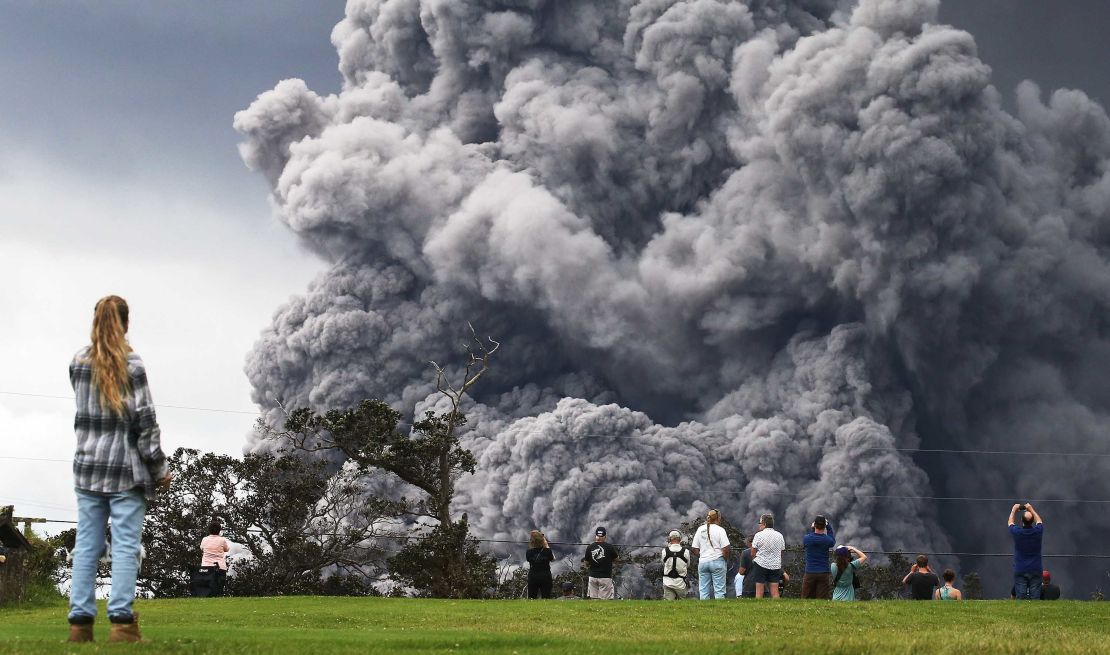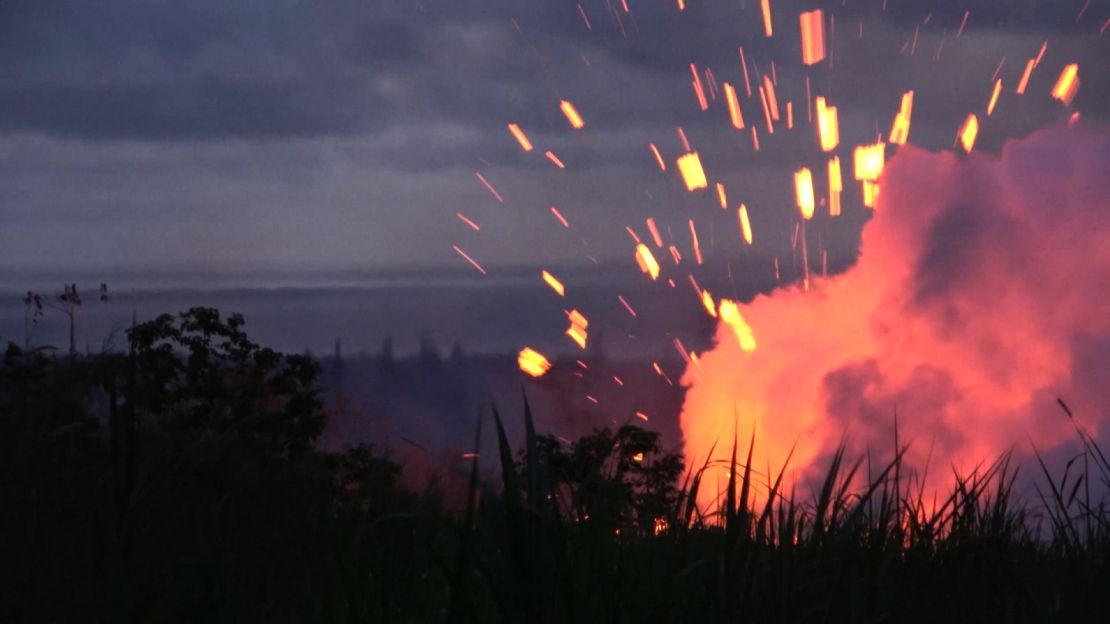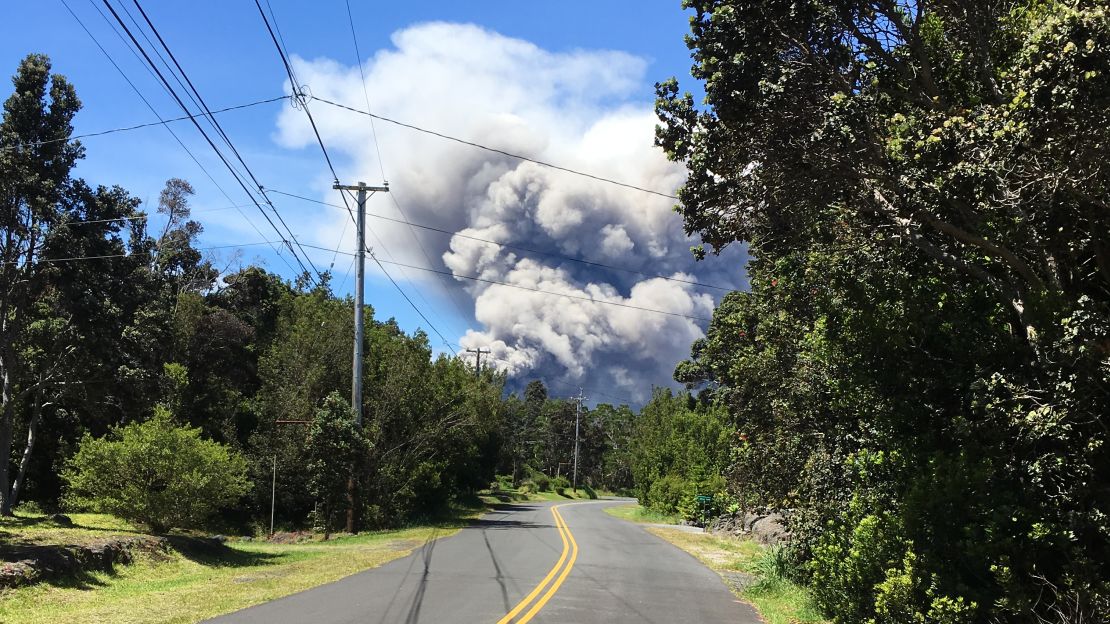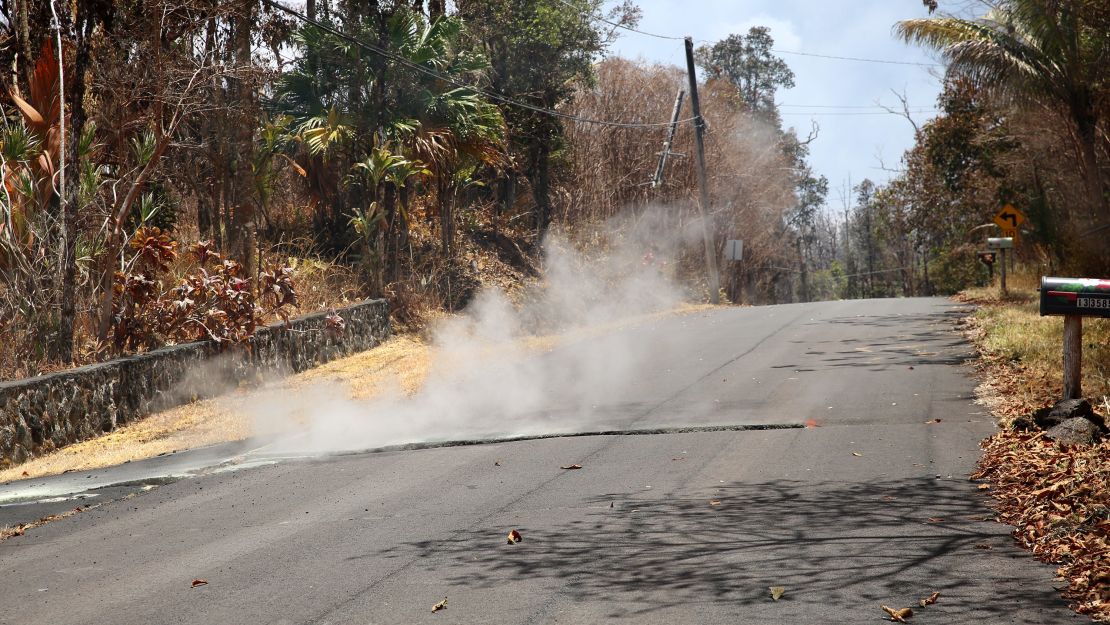Officials warned residents and airplanes to stay away from part of Hawaii’s Big Island after a plume of ash from the Kilauea volcano rose 12,000 feet into the air.
Since the Kilauea volcano erupted May 3, it’s been one nightmare after another for residents on the southeastern part of the Big Island.
The US Geological Survey issued a red alert Tuesday, which means a major eruption is imminent or underway and ash could affect air traffic
The USGS’ Michelle Coombs described the situation as ” very hazardous for aviation” and said her team isn’t quite sure what caused Tuesday’s slightly more intense ash emissions.
Norwegian Cruise Line announced that Pride of America would skip a call at Hilo on Tuesday and Kona on Wednesday. Instead, the ship will spend an extra day on the island of Maui.

USGS officials have said a phreatic eruption could happen at a crater at the top of the Kilauea volcano. It could send ash plumes as far as 12 miles from the summit crater, the Hawaiian Volcano Observatory said.
These are steam-driven explosions that occur when water beneath the ground or on the surface is heated by magma, lava, hot rocks or new volcanic deposits, the USGS says. The intense heat may cause that water to boil and result in eruptions.
Gas seeping out of cracks
Besides the ash, which is not poisonous, residents have to worry about choking on sulfur dioxide.
Coombs said the gas is coming out of 21 fissures, or cracks in the ground, caused by the volcano.
Levels of the toxic gas are dangerous in some places, Hawaii County officials said.
“Severe conditions may exist such as choking and inability to breathe,” the county’s Civil Defense Agency said. “This is a serious situation that affects the entire exposed population.”
Officials warned residents to leave the area and get medical attention if they’re affected by the gas.

Lava shooting like fountains
Then there’s dangerous lava. Of the 21 fissures, 17 is the longest, and has been shooting lava like a fountain and “sending spatter more than 100 feet into the air,” the observatory said.
Coombs said the fissure had diminished in intensity, but officials said activity can go up just as quickly as it goes down.
Still, many of the fissures are emitting “quite a bit” of sulfur dioxide.
Two new fissures are small with not much lava coming from them, she said.

CNN’s Stephanie Elam said her heart started pounding as she approached one fissure.
“It sounded like hammers in the dryer,” she said. “The molten rock was such a deep vibrant orange that it looked technically altered. When the sulfur dioxide hit my lungs once, it took my breath away.”
The Hawaii State Department of Health is asking the public to avoid any area with fissures because the gases emitted require special cartridge respirators.

More eruptions could follow
Scorching lava has already swallowed dozens of homes and vehicles. So far, at least 37 structures have been destroyed.
In addition to the lava and toxic gases, there are concerns about the phreatic eruptions.
The lava lake in the crater has been dropping since May 2, which increases the chances for a phreatic explosion.
But it will be difficult to warn residents who may be in the path of such an eruption.
Janet Babb, a geologist from the Hawaii Volcano Observatory, said phreatic eruptions are “notoriously hard to forecast, and can occur with little or no warning.”
CNN’s Scott McLean reported from Pahoa, while Steve Almasy and Faith Karimi wrote in Atlanta. CNN’s Chris Boyette, Joe Sutton and Keith Allen contributed to this report.


















